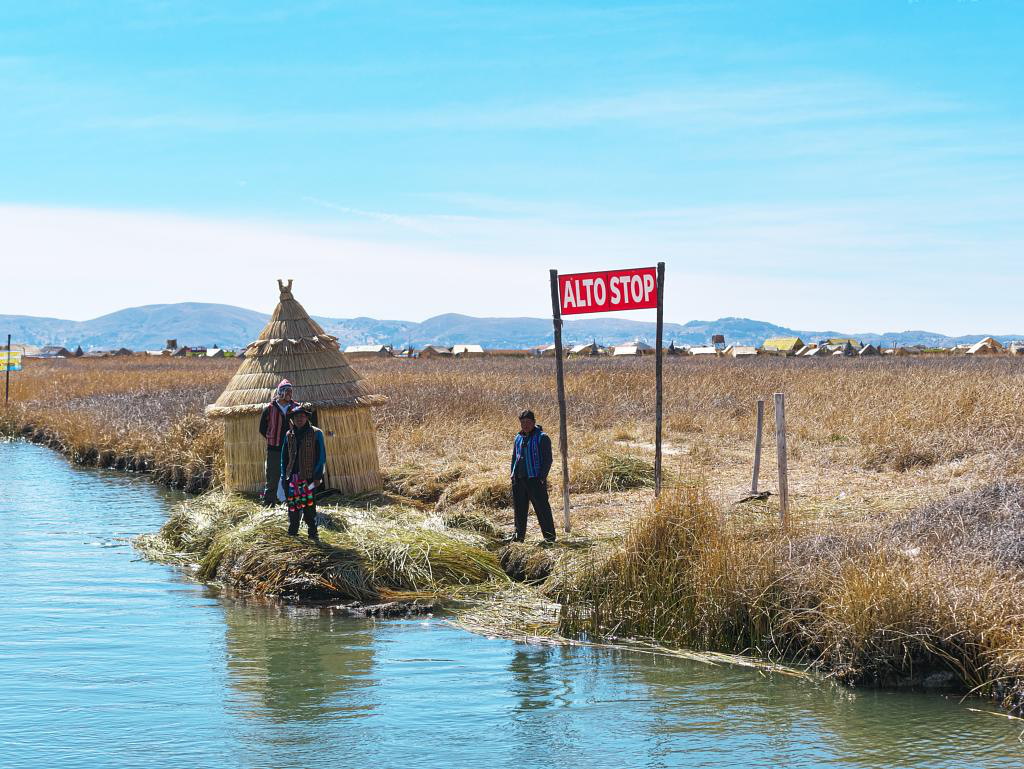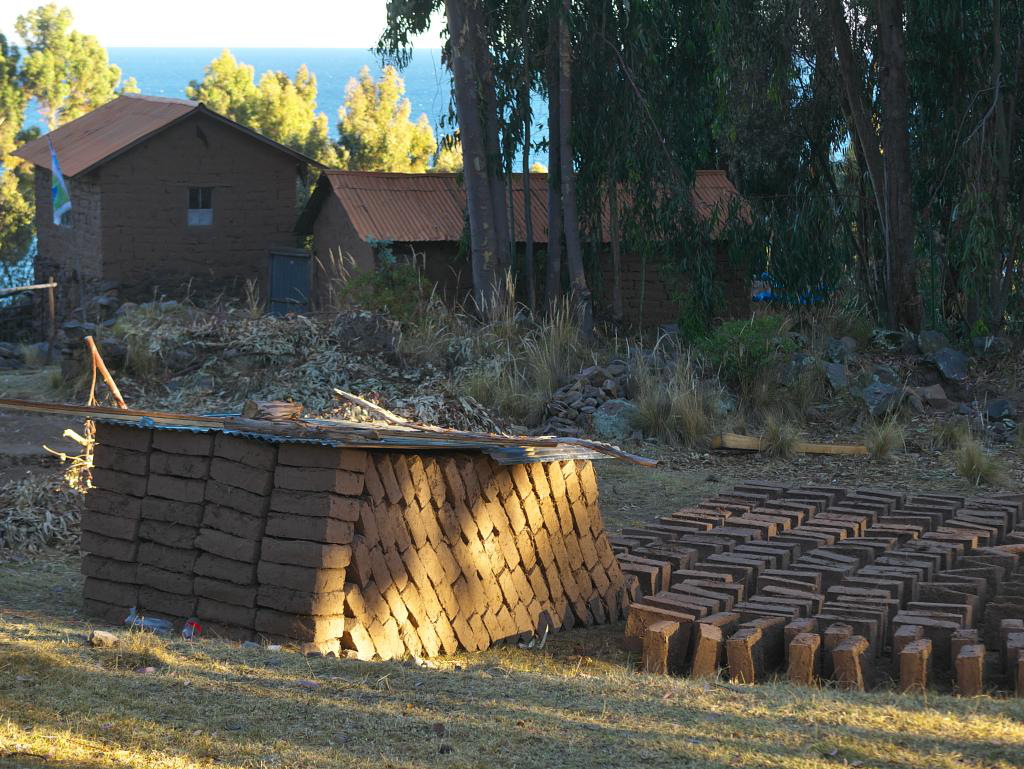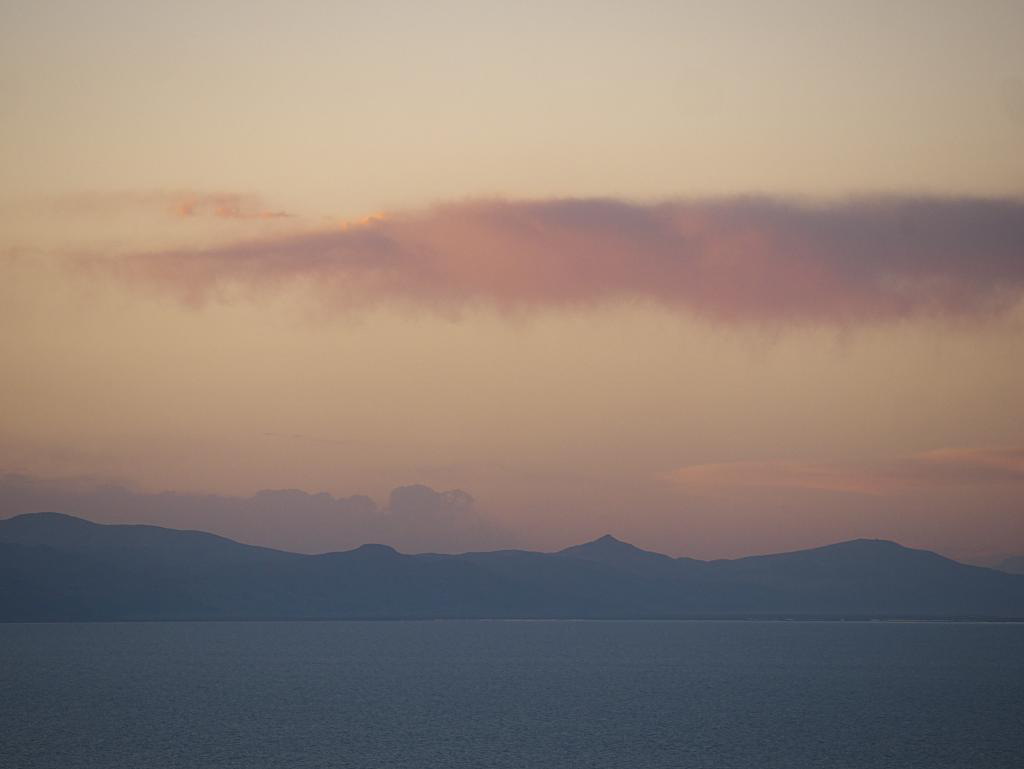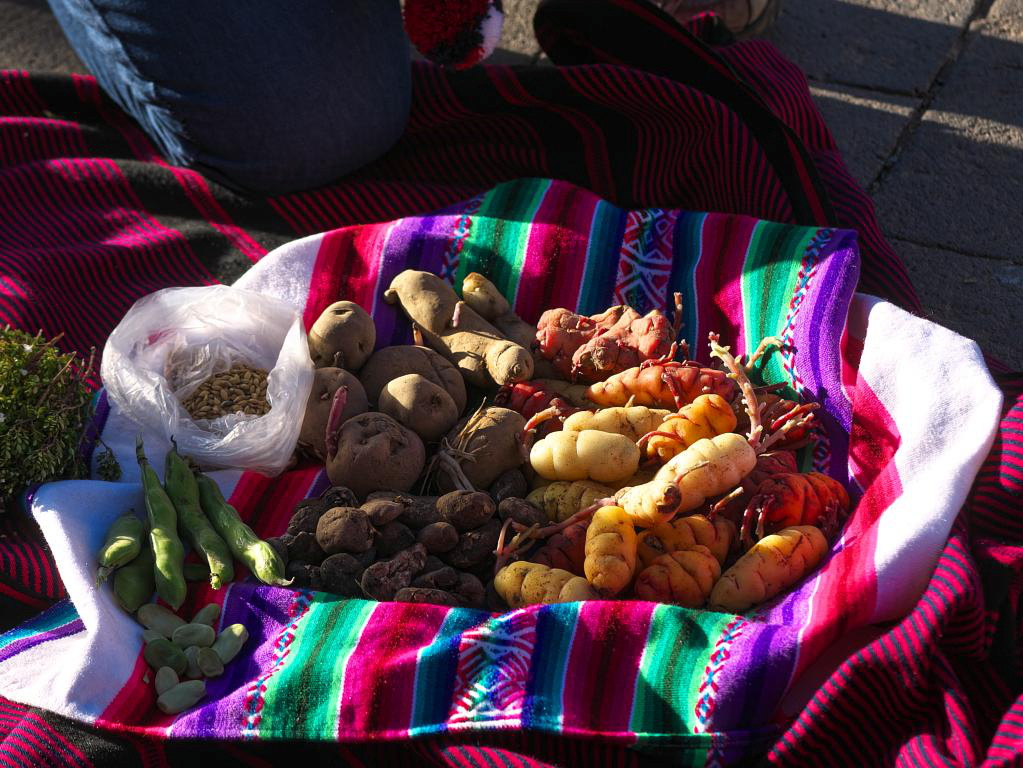
Puno from Lake Titicaca
Puno is Peru’s major port on Lake Titicaca. Shared with Bolivia, Titicaca’s 12,500 ft. elevation makes it the world’s highest navigable lake.

We set out early for our lake trip and the first stop was a group of floating islands (Islas de los Uros) in marshy areas near Puno. The Uru people live on more than 120 of these islands and while some of them welcome tourists and tourist income, others maintain their privacy and keep to themselves. On the way in there are floating tollbooths where tourists pay an admission fee.


Our stop was Isla Manco Capac and the island’s president — President Marcos — demonstrated the use of totora reed to build an island. Totora is the basis of Uru culture and everything from land and houses to boats, benches, watchtowers and trinkets is crafted from it. The reed surface felt spongy and wake from passing boats made the whole island undulate as waves passed through.

There were about 20 people of all ages living there and we spoke with one girl, President Marcos’s daughter-in-law, who was studying in Puno and planned to be a teacher. Each house has a solar panel and the island has visits from a convenience store boat.












Next up was a long, slow trip across Lake Titicaca to Amantani Island where we spent the night with at the home of Nestor & Annalee. The island is divided into several communities which share a town square and local government. Each community sets its own rules. For example, our hosts’ area allows motorcycles and is installing electricity but others are more traditional.

We planned to take a steep, long hike to visit ancient temples — still in use — at the top of the island, but only made it 2/3 of the way before the sun started to set. We retreated and stumbled around in the dark asking where we could find Nestor’s house. It was a moment of anxiety but we eventually found our way.

Peruvians are very hospitable people and this was no exception. Our beds were covered with very warm, thick blankets and I had a great sleep in total darkness and silence, only interrupted at dawn by crowing roosters and braying donkeys. There was a solar water heater but no hot water. Getting up in the middle of the night to pee was an adventure requiring a cell-phone-lit walk down uneven stone stairs to the flush toilet at ground level.


















Next morning we walked down to Amantani’s wharf and got on the boat headed for Taquile Island. Lunch was up a long and very, very steep path to Taquile’s main square. Taquile has been named a UNESCO heritage site for its textiles. The men do all the knitting — they are taught to knit when they are eight years old — and make voyageur-style hats for themselves, red if they’re married and multicoloured if not. Women do all the weaving and wear various tassels to indicate their status.

You can’t overstate the difficulty of walking up to Taquile’s town square. It was really very steep and, as I paused for breath, I was amazed to see very old ladies strolling up barefoot with heavy loads on their backs. A young man struggled to carry up a five foot diameter coil of steel rebar — I could barely lift it — and his friend had two large propane tanks strapped to his back. It was very impressive. These are tough, strong people.







Back to the boat and a relaxing 45km trip back to Puno and from there onward toward the Inca capital of Cusco and our trip’s finale at Machu Picchu.
Next post: Tour Bus to Cusco
If you enjoyed this, please share using the buttons below
Comments and follows are much appreciated!
Hi there! Such a good write-up, thank you!
LikeLike